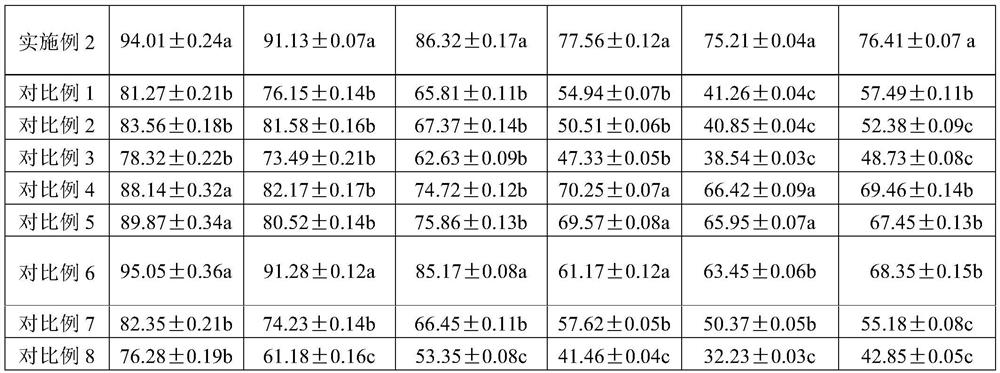A method and application of large-scale rearing of red-colored stinkbug by using Chicory supercystis
A technology of red scorpion and scorpion, which is applied in animal husbandry and other directions, can solve the problems of troublesome feeding procedures, shorten the growth and development period, etc., and achieve short growth and development periods, simplified feeding procedures, and adult fertility. strong effect
- Summary
- Abstract
- Description
- Claims
- Application Information
AI Technical Summary
Problems solved by technology
Method used
Image
Examples
Embodiment 1
[0042] Embodiment 1 A kind of method that utilizes Chicory supercystis large-scale rearing of red-coloured stinkbug
[0043] 1. Breeding of nymphs
[0044] (1) Place the egg mass of the red-colored stinkbug in an artificial climate box, and cultivate it for 4 days under the conditions of temperature 28°C, relative humidity 60%, and light time 16h / d, and the eggs can hatch into nymphs.
[0045] (2) Large-scale breeding of the 1 to 2 instar nymphs of the red-colored stink bug: the 120-order insect cages with a length of 60 cm, a width of 40 cm, and a height of 40 cm were put into the 120-order insect cages of the nymphs of the red-colored stink bug after 24 hours of hatching. 150 newly hatched nymphs of stink bugs were placed in insect cages. Pour the aphids in the plastic collection box into a double-layer plastic nylon screen with an upper layer of 20 mesh and a lower layer of 120 mesh (the size of the screen mesh is 19.5 cm in inner diameter, 20.5 cm in outer diameter, 5 cm ...
Embodiment 2
[0052] Compared with Example 1, in step (2), 1 to 2 ages of Chicory aphids and stinkbugs were raised at a quantity ratio of 2:1; in step (3), 80 stinkbugs were put in each pitcher cage, and bitter Aphids aphids and stinkbugs were reared at a ratio of 3:1.
Embodiment 3
[0070] Embodiment 3 compares the nymph developmental period, nymph survival rate, and adult fecundity of the nymphs raised in the schemes of Examples 1-2 and Comparative Examples 1-8.
[0071] Table 1 Effects of different feeding schemes on the developmental duration of the nymphs of the red-colored stinkbug
[0072]
[0073] Note: The data in the table are mean ± standard error, and different letters after the data in the same column indicate significant differences after comparison by t test (P<0.05).
[0074] As can be seen from the data in Table 1, the nymphs raised using the scheme of the present invention have better development and the shortest development period. And changing the feeding program will affect the developmental duration of the nymphs of the red-colored stinkbug and reduce their growth and development speed.
[0075] Table 2 Effects of different feeding schemes on the survival rate of nymphs
[0076]
[0077]
[0078] Note: The data in the table...
PUM
 Login to View More
Login to View More Abstract
Description
Claims
Application Information
 Login to View More
Login to View More - R&D
- Intellectual Property
- Life Sciences
- Materials
- Tech Scout
- Unparalleled Data Quality
- Higher Quality Content
- 60% Fewer Hallucinations
Browse by: Latest US Patents, China's latest patents, Technical Efficacy Thesaurus, Application Domain, Technology Topic, Popular Technical Reports.
© 2025 PatSnap. All rights reserved.Legal|Privacy policy|Modern Slavery Act Transparency Statement|Sitemap|About US| Contact US: help@patsnap.com



